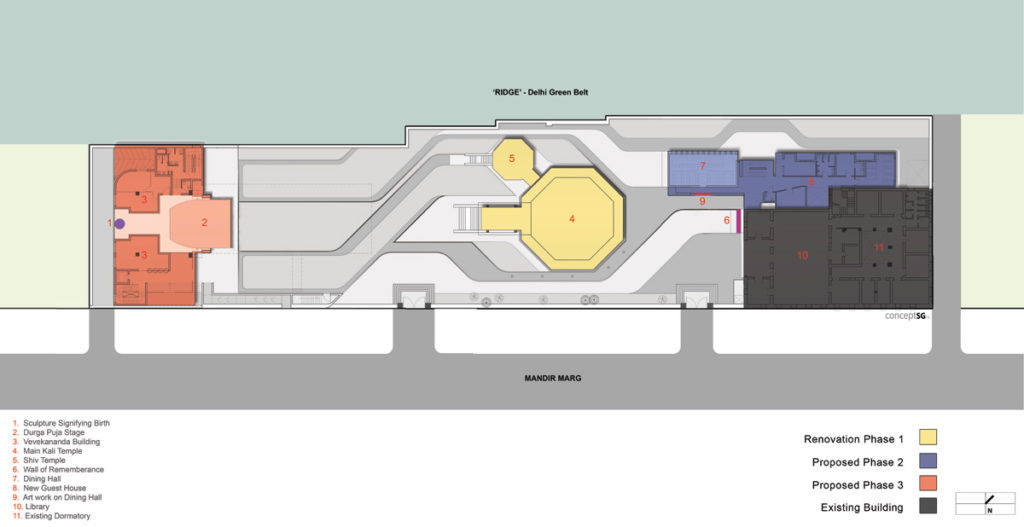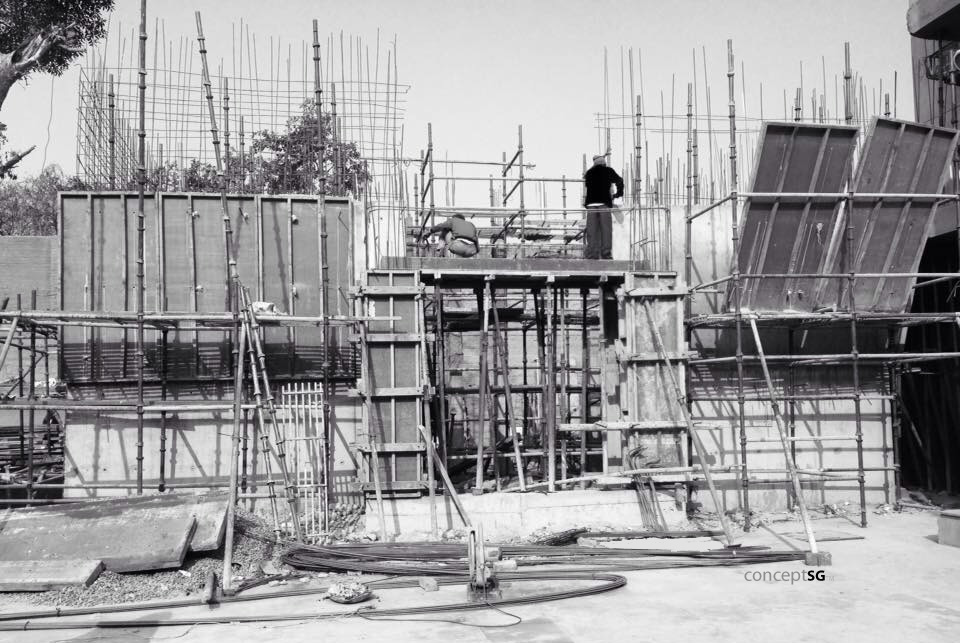Name of Architecture Firm and Location: conceptSG (London & New Delhi)
Design: Subharthi Guha
Design Team: Suman Kumar Guha, Ravneet Kaur Dhillion, John Alok Decruz, Ragini Sulekh
Client: President and Secretary, Dilli Kali Badi Comittee
Consultants: Structural Consultant: Charu Consultant & TPCL
Electrical Consultant: RADInfra
Plumbing Consultant: Deepak Associates
Contractor: Vishal Interiors
Total Built up Area: Approx. 3500 sq mts
Project Cost: Undisclosed
Year of completion: Phase 1 : 2015, Phase 2: 2018
Introduction:
A lady in a pink saree and a mauve shawl was seated in front of a large sculpted wall, soaking the winter sun with her head bowed. Strangely enough, she chose a spot that was not intentionally designed for seating. As architects we design spaces for use, yet there are uses such as this which is hard to comprehend but it exists as a result of something else. In this particular case it happens to be the Rejuvenation project of the oldest Kali Badi Complex at Mandir Marg, New Delhi
The site:
In 1914, about 4 acres of land was given by L&DO to the Kali Badi committee for development of a temple institution. Apart from the usual temple rituals and ceremonies, it is known to host a large gathering for Delhi’s oldest Durga Puja. The complex also offers travellers a place to stay in the heart of central Delhi at a very reasonable price for a max of 2 nights, houses an extensive library of Bengali literature, a small primary school and an art and sculpture space for artists. Since its origin, multiple buildings were built around the main temple and the condition of these buildings, with time, had deteriorated considerably and hence a proposal to rejuvenate was sought for. This was split in 3 phases – the first to re-clad the existing temple; the second to house a dining hall, 12 guest rooms, industrial kitchen for ‘bhog’ and dormitories; and the final phase to add additional features of an auditorium, nursery school and a new stage to host Durga puja – the main event of the year.
The concept:
With that in mind- we attempted to start with a thought to deliver something unique to Kali Badi – An idea to develop a narrative of human life through the built forms. With the existing Mandir (temple) at its epicentre of activity in this new axis, we placed 2 sculptures on either end of its axis – one signifying birth and another a wall of remembrance. The required functions as built forms then grew around these sculptures. The Vivekananda Building (3rd phase) is designed to embrace the sculpture by scooping out a hollow centre to host an interactive column of light that signifies birth whilst on the other end the Dining hall is set aside the axis as a respect to the wall of remembrance where multiple donors who choose to donate in memory of someone special, is inscribed.

Masterplan – 3D view of overall development of New Delhi Kali Badi 2008- credit: conceptSG

Site Plan – Organisation Diagram – Credit: conceptSG

Dining Hall Exposed concrete construction (2017 Jan) – Picture Credit: Subharthi Guha
The project such as this in the heart of Delhi, is a result of bringing together a team consisting of a borderline optimist architect, skilful engineers, a willing contractor, a visionary client (who unfortunately passed away before the start of construction) and a team of very committed individuals, who believed that in contemporary realm where buildings speak out loud about its value engineering and functionality; there is still space to ask questions beyond the rationale, for the much needed search of a better landscape.
The fundamental concept was to attempt a rejuvenation of a supreme thought that prevailed in 600 CE: thinking towards a society that believed ‘gods live within the art of creation in the form of human expression ‘- that which has given us reasons to celebrate human ingeniousness. Rabindranath Tagore once said – God finds himself by creating.